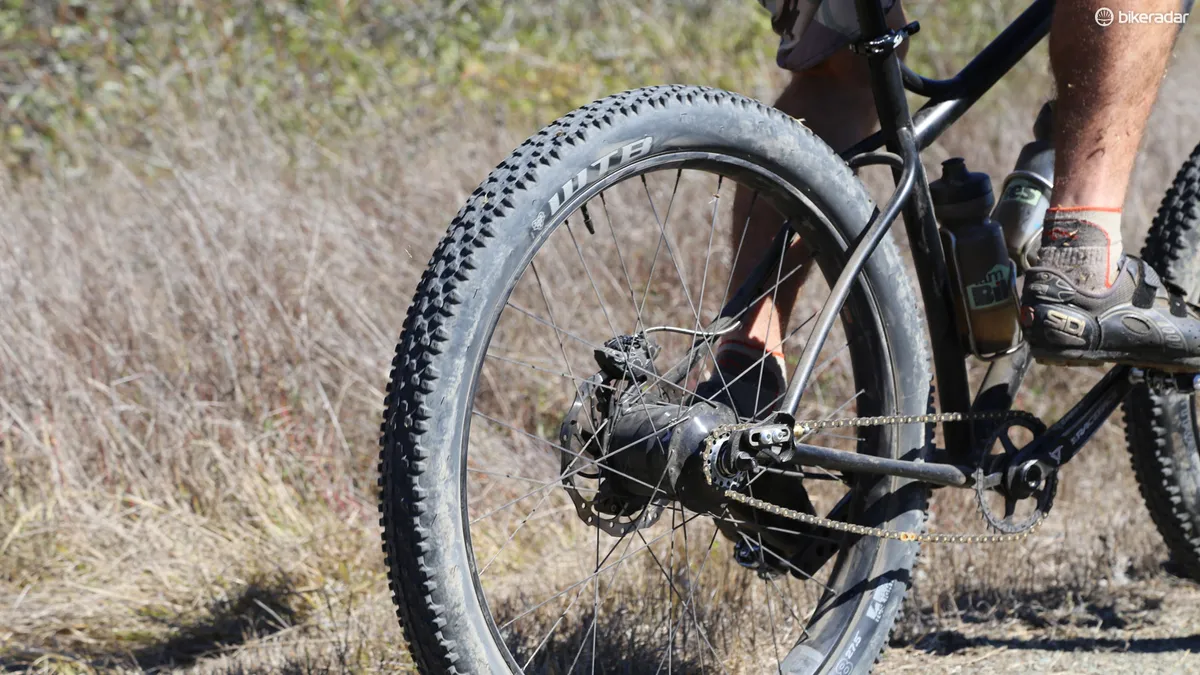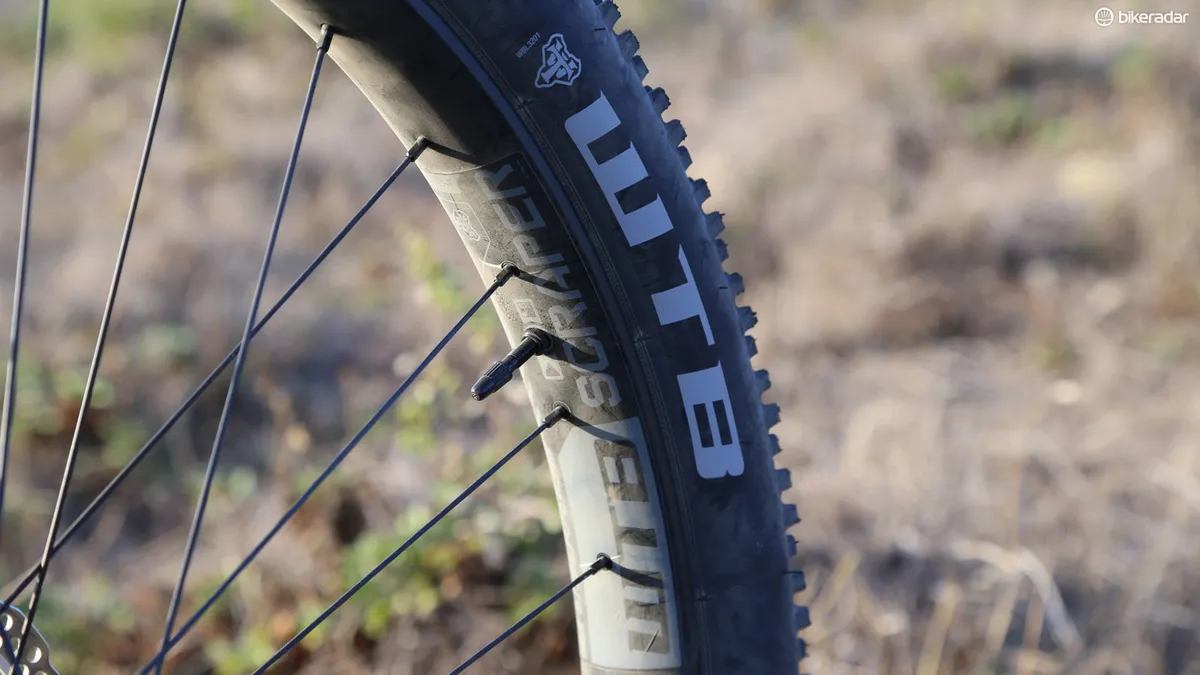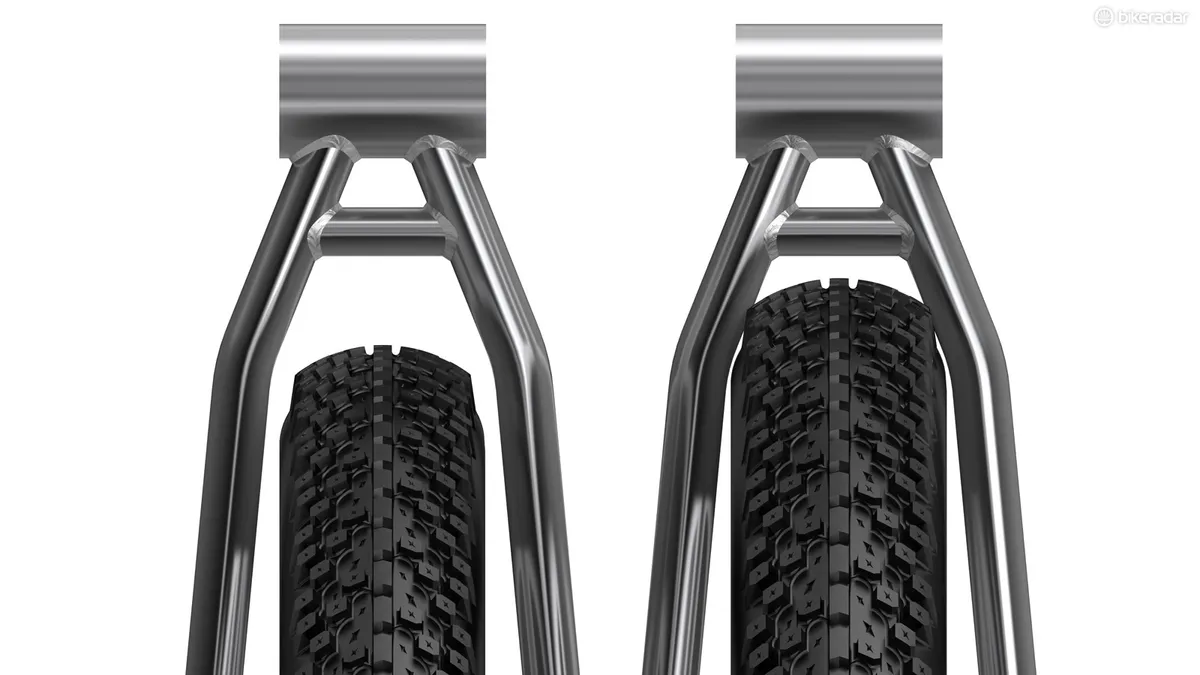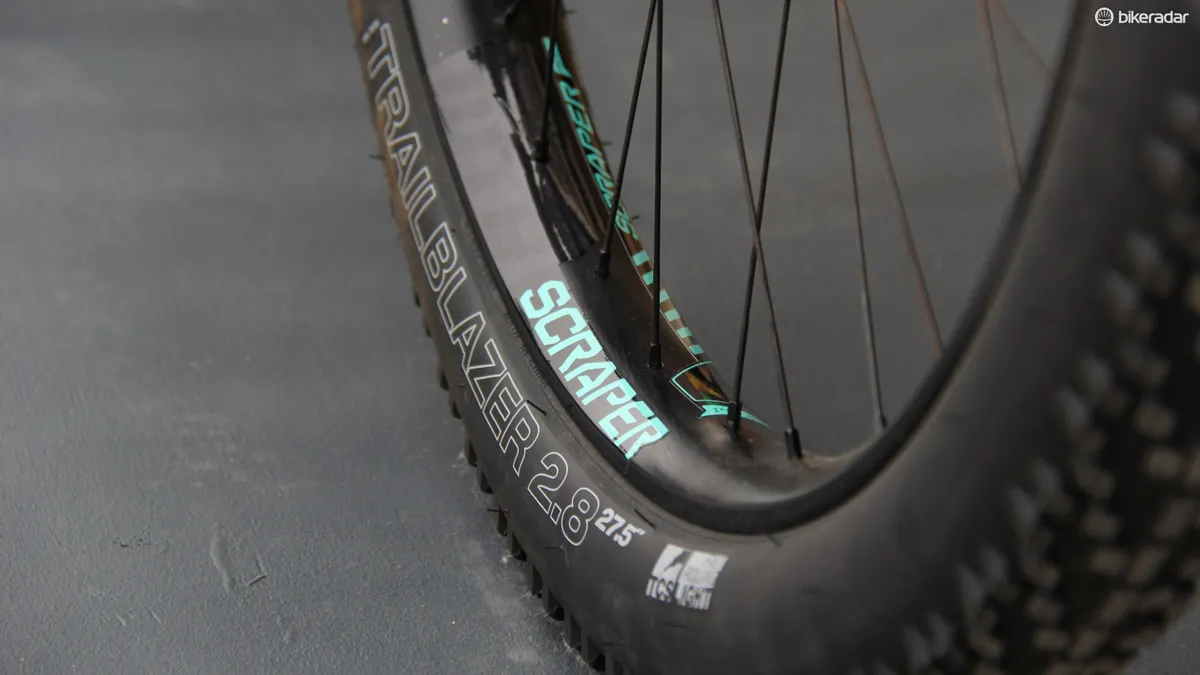In a previous installment of Trail Tech we examined the development of 29+ mountain bike tyres, rims and frames. We’re returning to the subject of slightly chubby, 3in wide tyres, but this time in a smaller diameter. The 27.5+ platform is poised to become the “next big thing” in mountain biking.
Like 27.5in wheels, 27.5+ occupies a middle ground between two existing platforms: fat bikes, with 26 x 3.8in and (ever larger) tyres, and traditional mountain bikes, whose tyres generally range from 2 to 2.5in wide.
Why do companies feel there’s an opportunity to capitalise on this middle ground? One reason is that many mountain bikers have gained an appreciation for the additional traction and float that fat bikes can provide. Many mountain bikers have also come to appreciate the increased stability that wide rims give their tyres. Last but certainly not least: some of these new tyres may work with the bike you already own.
Video
Video: What Mountain Bike magazine's Jon Woodhouse and Tom Marvin on whether plus and fattie are here to stay
WTB blazing the trail
Prior to this year’s Sea Otter bicycle expo, few people had given the concept of 27.5+ much thought, and with good reason; the 27.5in wheelsize itself was still gaining ground. But Wilderness Trail Bikes saw an opportunity to develop a new rim and tyre combination that could be used in the 29er mountain bikes many riders already own.
“The idea of a plus-size tyre on a smaller diameter rim fitting existing 29in bikes came from a friend of mine, Bob Poor, when he visited me at my house shortly after Interbike in 2012,” said Mark Slate, WTB’s vice president of product development.
WTB designed the first 27.5+ tyre, the Trailblazer, to fit comfortably between the stays of most modern 29ers. This 27.5x2.8in tyre is intended to be paired with rims with an internal width of 25-45mm. WTB notes that some users may need to pair this tyre with rims measuring closer to 25mm in order to get ample chainstay clearance.
Related reading: Rethinking rim width
But 27.5+ isn’t just about developing a way to fit wider tyres into existing frames. For some companies, 27.5+ is about advancing the capabilities of the modern trail bike.
The WTB Trailblazer tyre and Scraper rim made their public debut this year at Sea Otter on a Rocky Mountain prototype dubbed the Sherpa. This bikepacking concept bike used a carbon front end from Rocky Mountain’s 29in cross-country full suspension, the Element, mated to wider aluminum rear end that would clear the Trailblazer tyre mounted to the 45mm-wide Scraper rim.
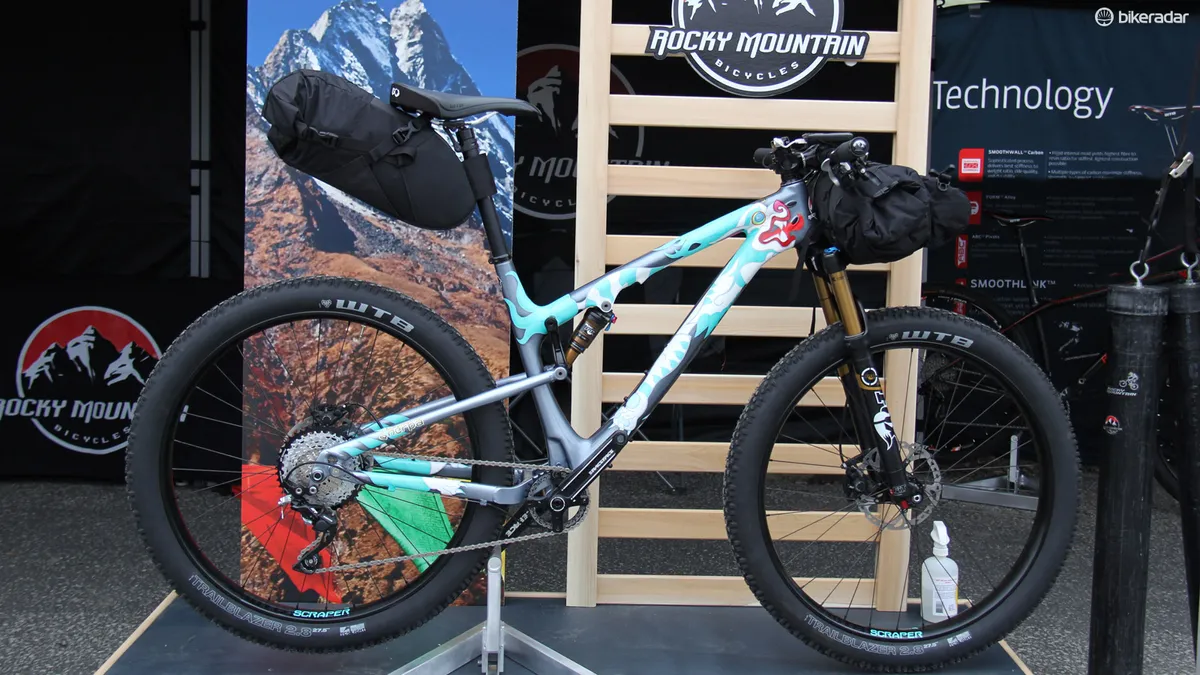
Rocky Mountain created the Sherpa, a prototype 27.5+ adventuring touring rig, for this year's Sea Otter bicycle expo
Rocky Mountain declined to comment on if the Sherpa will become a production model for 2015. However, if the company went to the effort of building a prototype and was willing to show to the general public, a production version is probably on the horizon.
“The next big thing”
Two product managers who agreed to speak with BikeRadar on the condition of anonymity stated that 27.5+ will be one of the most significant advancements we see in mountain biking 2015, and that many companies will be introducing complete bikes designed around 27.5x3in tyres.
One company, that would not confirm its plans, but certainly sees the potential of the 27.5+ platform is Trek.
“The ‘plus’ category has real merit. We’ve ridden the bikes and examined the benefits. There is no denying the unique ride quality and fun factor,” said Trek mountain bike brand manager Travis Ott.
Trek in particular is extremely well positioned to capitalise on 27.5+. Thanks to its component and accessory brand Bontrager, Trek can develop its own wheels and tyres in house. Trek and SRAM's co-development of the Boost 148 axle standard — a 148x12mm rear axle spacing available to all bicycle manufacturers that makes it easier to design mountain bikes with short rear ends and ample tyre clearance — could prove useful if incorporated into a 27.5+ trail bike.
Related reading: Trek and SRAM roll out a wider axle standard
27.5+ versus 29+
Plus-sized 29in mountain bikes are still a relatively rare breed. Surly, Singular, Lenz Sport and Niner have 29+ models in their line, though they are decidedly niche products. (The lack of rim and tyre options is an issue, though more options are coming to market.) Will the same be true of 27.5+, or will it outpace the development of its predecessor?
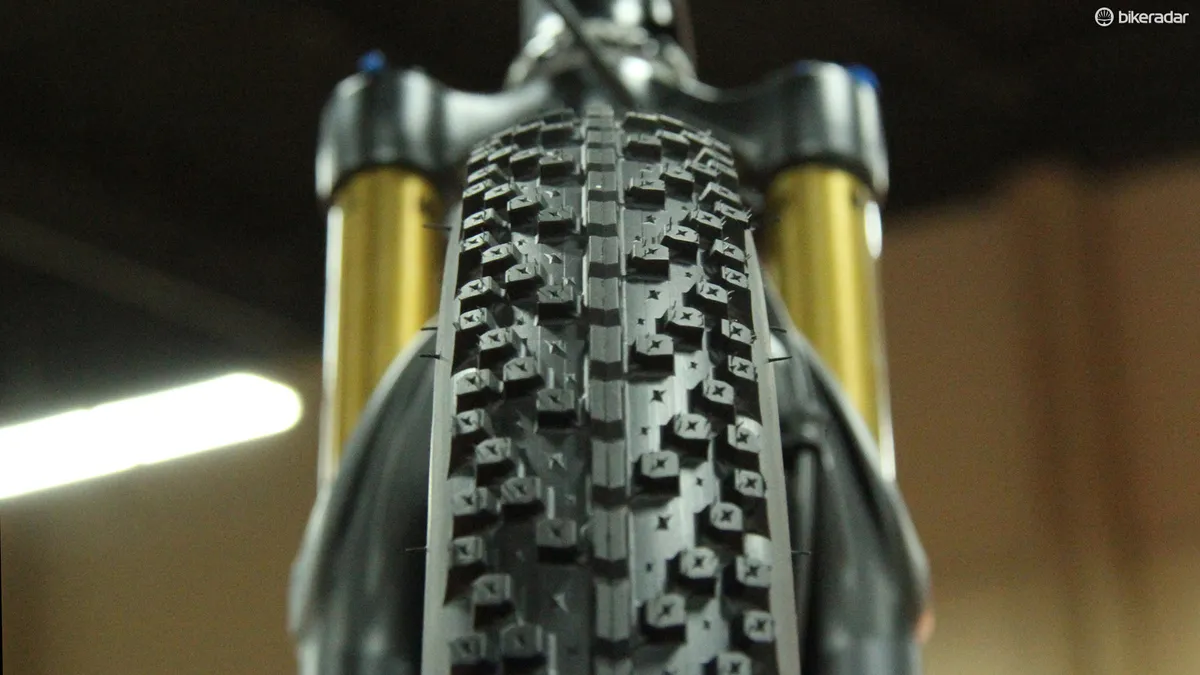
One of the claimed benefits of 27.5+ tyres is that they measure out to approximately the same outer diameter as a 29x2.3in tyre, meaning it's possible to use existing components, such as 29er suspension forks
“The beauty of 27.5+ is its compatibility. It works in bikes people already have. It also rides really well, it spins up to speed quickly, doesn’t feel lethargic to get moving, yet allows you to run lower pressure and gain uncanny traction. The tread pattern has quite a lot to do with this, but there really is something to the size. Because of its accessibility to bikes already out there and the lack of specific, custom parts necessary, it’s not unreasonable to think this size will become more popular than 29+,” said WTB’s Will Ritchie.
Alex Cogger, director of product for Rocky Mountain Bicycles, was one of the first to experiment with the 27.5+ platform and the driving force behind the development of the Sherpa prototype. He feels that — much like 27.5in wheels in general — 27.5+ tyres strike a balance that might appeal to a wider portion of the market.
“There is no getting around the fact that 29+ is a lot of rubber far from the hub. Sure, it’s squishy and grippy and fun. But man is it slow, and heavy and cumbersome — 27.5+ gets you most of the advantages of the bigger tyre, but dramatically reduces the inertia,” Cogger said.
Salsa Cycles’ engineer Pete Koski notes that designing a 27.5+ mountain bike is not dramatically different from the development of a modern 29er.
“In my mind, biggest advantage is that the overall outside diameter of 27.5+ fits within the same diameter as a standard 29x2.3in wheel," Koski said. "This means frames, forks and drivetrains can be designed around the same envelope as standard 29ers, with the extra width being the only additional major consideration.
“With the addition of Boost technology, it's possible to design a bike that is a fully-featured and functioning 29er and/or 27.5+ at the same time, with no major compromises or adjustments to chainstay length, [head tube angle], chainring sizes, etc.
“For this reason alone, 27.5+ will likely be more widely used than 29+ in the future, as the unusually larger diameter of 29+ requires more specific frame and fork designs," he said. "That said, I don't see either going away.”
Plus versus fat
While there many be broad consensus that 27.5+ is easier to pedal – as well as easier to package – than 29+, the jury is still out on how plus will affect the fat bike market.
Both Koski and Cogger believe there’s room for both platforms, but have different views on how things will shake out.
Cogger notes that there’s no substitute for a fat bike in some conditions, but believes some fat bike riders will make the switch.
“I think 27.5+ will take a bite out of fat bike sales for the ‘beardos’ — the guys who ride fat bikes on dirt ‘just because’. For sure, 27+ is more user-friendly on regular trails than true fat bikes. But realistically, the people who are riding fat bikes for what they were actually designed for would be let down by 27+ in those conditions — it obviously doesn’t function the same as 4in or 4.8in tyres,” Cogger said.
Koski, on the other hand, doesn’t think it will be the fat bike that gets put out to pasture to make room for a new 27.5+ steed, but rather, the standard mountain bike that gets kicked out of the stable.
“Fat bike owners will not replace their fat bike with a plus bike, because there are advantages of fat that plus cannot match. More likely, they will replace their standard-size mountain bike with a plus-size bike if they are a multi-bike owner. A percentage of non-fat bikers / skeptics, will see the plus-size option as a more palatable option for their riding style and jump on board, where the leap to fat was just too much for them,” Koski said.
Will 27.5+ plus become the norm?
There’s a synthesis of technologies and trends at play in the development of 27.5+ bikes. Lightweight tyre manufacturing techniques, wider axle standards, and reliable tubeless systems are coalescing with rider preferences for wider rims, wider tyres and more tolerance for experimentation with industry standards, even if it means upgrading.
Some industry experts believe ‘plus’ could become the new normal for mountain bikes.
Trek, for example, views 27.5+ as making a splash in the trail segment of the market. “The ‘plus’ category will affect trail bike sales. It will fulfill the initial promise of trail hardtails. If you want to ride in snow or sand, get a fat bike,” said Ott.
Salsa’s Koski thinks the time is right for 27.5+. “I think plus-size tyres, especially in the 27.5+ size have the potential to become a significant chunk of what we consider a ‘normal’ mountain bike in the future”.
Rocky Mountain’s Cogger takes a more measured approach to the development of 27.5+ mountain bikes. “It’s been a hot topic of debate among bike product nerds such as myself. I think we may see some round pegs in square holes. I suspect we may see some people pushing it into categories where it doesn’t really make sense from a technical standpoint, but they want to create something new. I’ve heard whisperings about different ideas that I don’t agree with at this point. Being one of the few people who have actually ridden the tyre / rim size, I feel like some people are grasping at straws, afraid to miss ‘the next big thing’, and are making wild statements about something they have precisely zero experience with.”
However the development of the 27.5+ mountain bike unfolds, it’s clear that with so many product experts sounding off, planning for, and experimenting with 27.5+, this is one trend you should pay close attention to.
What do you think? Would a mountain bike with 27.5x3in tyres appeal to you?
